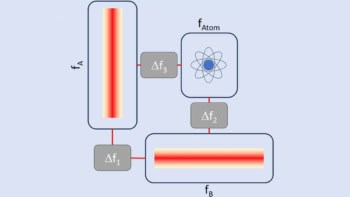
Shrinivas Kulkarni has won the 2024 Shaw Prize in Astronomy for his work on variable and transient astronomical objects. Kulkarni is based at the California Institute of Technology (Caltech), and the award citation describes “his ground-breaking discoveries about millisecond pulsars, gamma-ray bursts, supernovae, and other variable or transient astronomical objects”. He is also cited for his “leadership of the Palomar Transient Factory and its successor, the Zwicky Transient Facility, which have revolutionized our understanding of the time-variable optical sky”.
The annual award is given by the Shaw Prize Foundation, which was founded in 2002 by the Hong Kong-based filmmaker, television executive and philanthropist Run Run Shaw (1907–2014). It will be presented at a ceremony in Hong Kong on 12 November and it includes a $1.2m cash prize. There are also Shaw Prizes for life sciences and medicine; and mathematical sciences.
Kulkarni was born in Kurundwad in the Indian state of Maharashtra and did an MS degree in physics at the Indian Institute of Technology in New Delhi in 1978. He then went to the US, where he completed a PhD in astronomy in 1983 at the University of California, Berkeley. In 1985 he joined Caltech, where he is now George Ellery Hale Professor of Astronomy and Planetary Sciences.
Flicker, fade or brighten
Unlike the Sun, which has shone steadily for billions of years, some astronomical objects can flicker, fade or brighten on relatively short timescales of years to milliseconds. Kulkarni has devoted much of his career to the study of these variable and transient objects. Indeed, when a PhD student he was part of a team that discovered the first millisecond pulsar – a neutron star that is rotating over 600 times a second.
In 1997 Kulkarni and colleagues were the first to determine the distance to a gamma-ray burst. They found that the object that emitted the gamma-rays was in the distant universe, which means that the event must have been extremely energetic.
Kulkarni has also been a leader in the building of instruments to observe variable and transient objects. The Palomar Transient Factory came online in 2009 and the Zwicky Transient Facility in 2017 and both facilities have helped astronomers discover a wide variety of variable and transient objects. These include a star swallowing one of its planets and stars being disrupted by nearby black holes.

Milky Way magnetar could be the source of a fast radio burst
He was also involved in the deployment of STARE2, which comprises three radio telescopes that together detect fast radio bursts (FRBs). In 2020 STARE2 observed a FRB from a magnetar – a highly magnetized neutron star – in the Milky Way. This confirmed that magnetars are sources of FRBs.
Kulkarni has also played a key role in the study of brown dwarfs – objects with masses between that of stars and planets.
Scott Tremaine, who chaired the 2024 prize selection committee, told Physics World that Kulkarni should also be lauded for his efforts to democratize astronomy by making data from his telescopes available immediately to astronomers worldwide.



